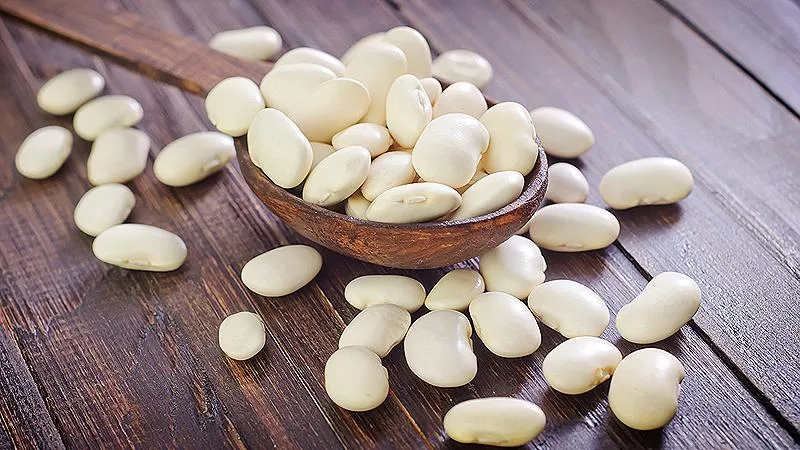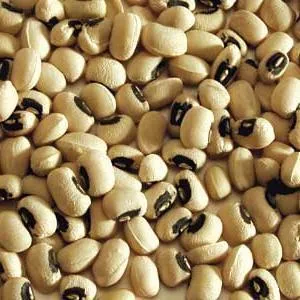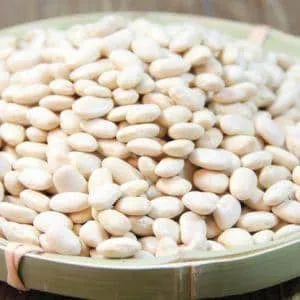White beans – a nutritious and delicious product, especially valuable for those aiming to lose weight. In this article, we explore the varieties of this plant, the benefits and potential drawbacks of white beans. You’ll also learn how to plant and care for them, as well as how to store your harvest properly.
Table of contents
Description and Characteristics of the Plant
White beans belong to the legume family. They grow in pods and have an oval, slightly flattened shape (as seen in the photo). Originally, they were cultivated and consumed in Latin America and India.

The beans are renowned for their nutritional value. They contain more protein than meat and are three times as calorie-dense! This variety is particularly beneficial for those with liver or gallbladder issues. Additionally, it helps strengthen the immune system.
The average yield of this plant is 1 kg per square meter of garden bed.
Health Benefits of White Beans
Compared to other bean varieties, white beans have the highest protein content. They are also rich in insoluble dietary fiber, which absorbs and removes toxins from the body.
Thanks to their folic acid content, white beans help prevent atherosclerosis. They also strengthen teeth and bones due to their calcium and magnesium content.
White beans are recommended for people with nervous system disorders. Their high iron content helps prevent anemia and boosts resistance to infections.
Note. White beans are also widely used in cosmetics, as their compounds help reduce wrinkles.
White beans are excellent for weight loss, as they boost metabolism – making them a great choice for those looking to shed extra pounds.
Potential Drawbacks of White Beans
Elderly individuals and those with nephritis or gout should consume them in moderation due to their purine content. People with ulcers, pancreatitis, gastritis, or cholecystitis should also exercise caution. Additionally, beans may cause bloating.
Popular White Bean Varieties
Here are three of the most popular white bean varieties in Europe.
Navy Beans
This variety is rich in iron and fiber. The beans are small and creamy-white, widely used in European cuisine. Ideal for dietary meals, they pair well with vegetables and herbs. They cook quickly and have a pleasant aroma.
Cannellini Beans
Popular in Mediterranean cuisine, these beans are high in calcium and potassium, which remain intact even after cooking.
Butter Beans (Lima Beans)
Common in Southern Europe, these beans resemble small mandarin slices and have a delicate, buttery taste. Best suited for stewing and frying.
Growing and Caring for White Beans
White beans thrive in warm, temperate climates. In Europe, they should be sown in late May or early June, after the last frost. Before planting, soak the seeds in water until they swell.
Sow the seeds in well-loosened, neutral-pH soil at a depth of about 3 cm. Use approximately 30 seeds per square meter. Harvesting begins two months after germination. For an earlier harvest, start indoors in early May.
Basic care includes weeding, loosening the soil, and regular watering. Mineral fertilizers can also be applied.
Important. Avoid using fresh manure as fertilizer.
Disease and Pest Prevention
Common bean diseases include anthracnose, root rot, white mold, powdery mildew, and bean mosaic. Crop rotation helps prevent these – avoid replanting beans in the same spot for at least 4–5 years.
In autumn, clear the planting area of weeds, till the soil, and add potassium and phosphorus fertilizers. During growth, use nitrogen-free fertilizers (e.g., potassium chloride, potassium sulfate, superphosphates, or rock phosphate). Use treated seeds or warm them (50–60°C) before planting.
Major pests include aphids, whiteflies, bean weevils, and seed beetles. To deter them, treat seeds with hydrogen peroxide or potassium permanganate before planting. Planting garlic or dill nearby can also help repel pests.
If natural methods fail, use approved European pesticides like Spinosad or Pyrethrin (apply once before flowering) or Beauveria bassiana (apply before and after flowering).
Harvest beans before the pods split. To kill any remaining pests, freeze the beans at -10°C or lower for 3–4 days.
Attention! Store beans in a cool place in airtight containers.
Conclusion
White beans are a nutritious and versatile food, packed with essential nutrients while remaining suitable for diets. Cooked white beans contain 298 kcal per 100 g.
Nutritional content per 100 g: 20.9 g protein, 1.8 g fat, and 64 g carbohydrates. Growing them is straightforward if you follow the guidelines outlined above.







